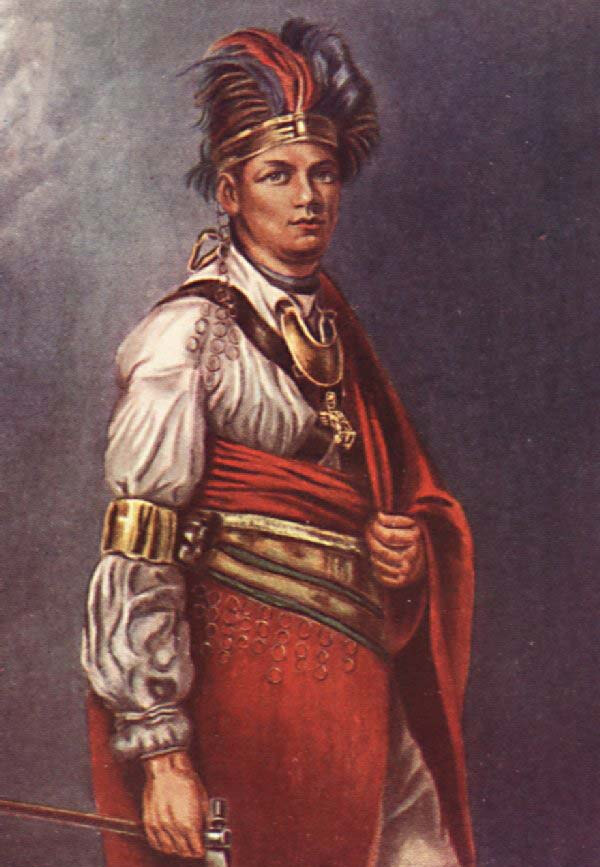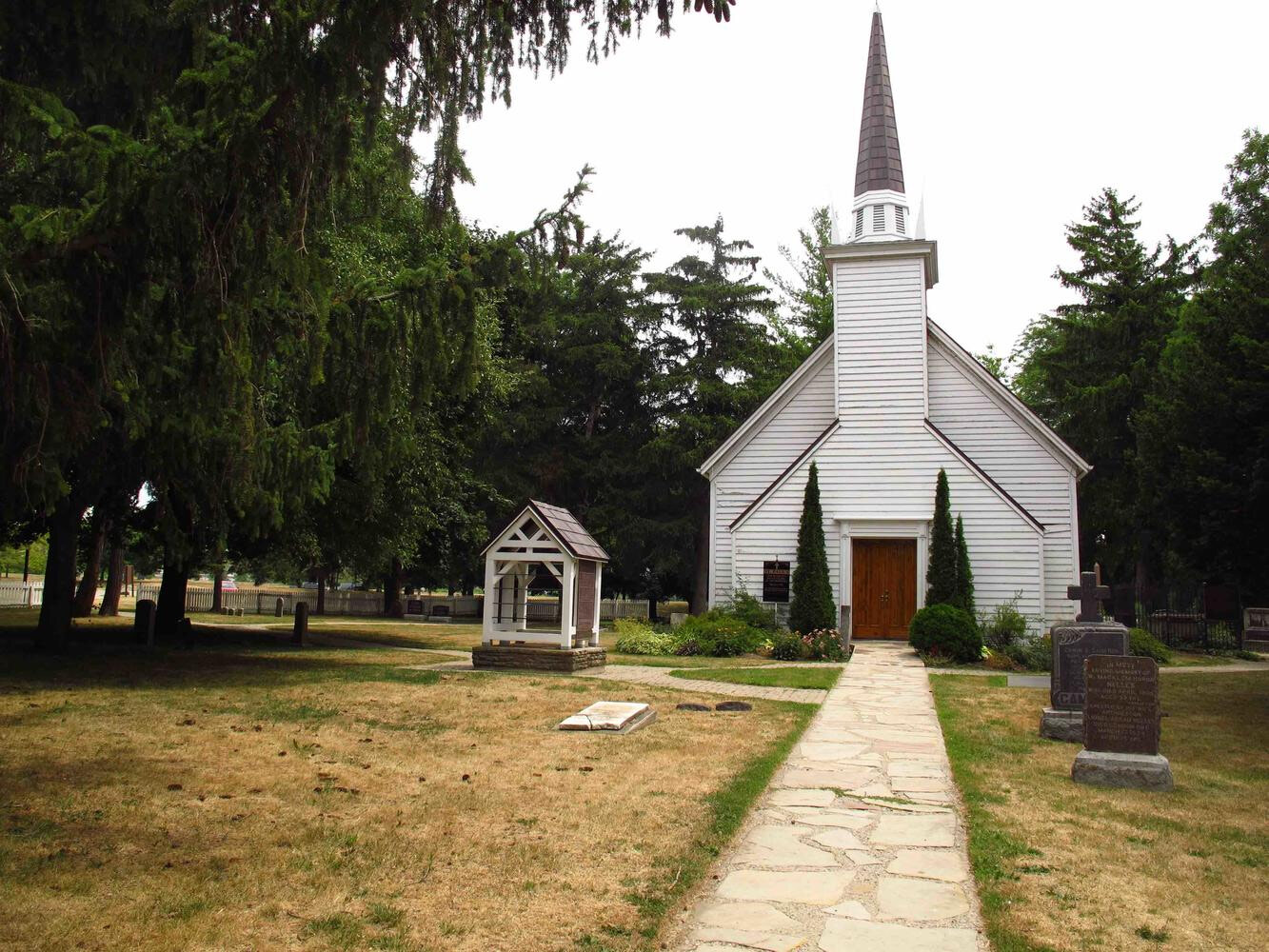Brant and the Six Nations
Library and Archives Canada, Acc. No. 1972-26-648
Remarks
C.W. Jefferys' notes about this picture from The Picture Gallery of Canadian History Volume 2
At the close of the Revolutionary War the territory of the Six Nation Indians passed by treaty into the possession of the United States. To compensate those of them who had supported the British cause lands were given them in Upper Canada. A number of the Mohawks settled near Deseronto on the Bay of Quinte; but most of that tribe removed to a tract of land extending for six miles on either side along the Grand River which was granted to them by Governor Haldimand in 1784. With them came the Cayugas and members of other tribes of the Iroquois League. Their descendants still occupy these localities, though the greater portion of the Grand River territory has been purchased from them long since for white settlement.
The Society for the Propagation of the Gospel in Foreign Parts early in the eighteenth century had established a mission to the Mohawks. After their settlement in Upper Canada it continued its interest in them by the support of missionaries, the publication of Brant's translations of the Gospel of St. Mark, and the Church of England Prayer Book, etc., and by the maintenance of schools for Indian children. The old Mohawk church possesses a folio Bible and some of the silver communion vessels which Queen Anne in 1712 presented to "Her Majesty's Chapel of the Mohawks," the others being preserved by the church on the Deseronto Reserve. In the graveyard of the Grand River chapel are the tombs of Joseph Brant and his son John, and other chiefs of the tribe. It will be observed that in Lieut. Pilkington's sketch the spire of the church is different from that of today. The map is taken from the William Chewett Map of Upper Canada, dated 1813. See Grand River, by Mabel Dunham.
Published References
- Jefferys, Charles W. (1945) The Picture Gallery of Canadian History Volume 2, p.27






Comments